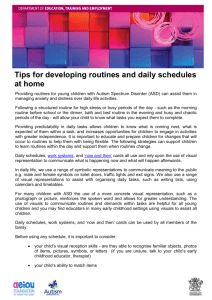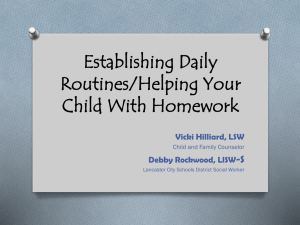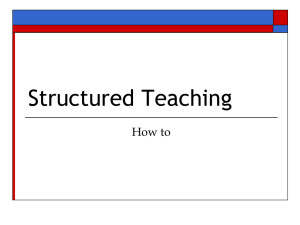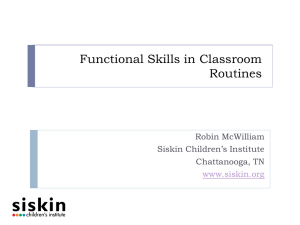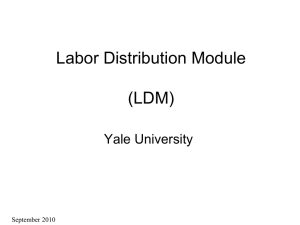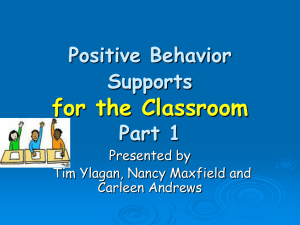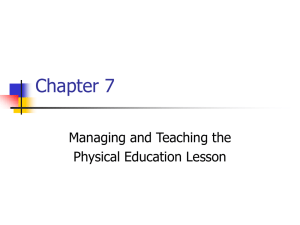Visual Strategies (PowerPoint)
advertisement
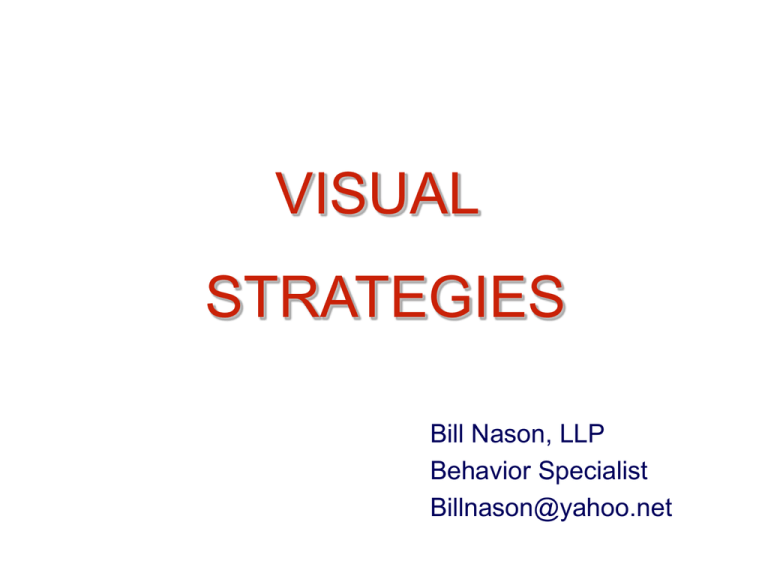
VISUAL STRATEGIES Bill Nason, LLP Behavior Specialist Billnason@yahoo.net Written Lists & Schedules We Rely On Visual Strategies To Organize Our Day Why Visual Strategies? Poor auditory processing Delayed information processing Problems with working memory Difficulties organizing information Visual information is more concrete, literal, and clear. • Many children with ASD are visual learners; thinking in pictures. • For nonverbal children pictures can be a communication tool. • • • • • Children With Disabilities Visuals Provide: Clarity and predictability to routine. Helps organize child’s world. Provides concrete, visual information. Helps communicate expectations and consequences. • Helps child communicate needs and wants. • Reduces anxiety and behavior problems. • • • • . ACTIVITY SCHEDULES Visual Schedules and Routines Bedtime Routine Pajamas Brush Toilet Wash Hands Story Bed Visual strategies can help crystallize the patterns of routine. Helps child “see” what is coming up and in what order. Jimmy’s Morning Schedule Permanent Before Dinner After Dinner Activity Hang Up Coat Dishes to Sink Schedule Feed Dog Use magic marker to check off each task as completed. Load Dishwasher Put Shoes Away Take Trash Out Homework TV Computer Snack Master Schedule To Be Done Finished Velcro Board Have child transfer pictures from one side to the other, as tasks are completed. Or Place pictures in an attached envelope. Master Schedule Using Portable Schedules Portable Schedule Portable schedules allow you to break down the master schedule into simple routines, ending with a preferred activity. Master Schedule Chain Routines Into Schedules Each sequence ending with a preferred activity. Work from one routine to another. Always End With Preferred Activity (Reinforcer) Always try to end with a reinforcing (preferred) activity If needed, start with “First and then”, and gradually add on. Then build larger schedules of several smaller routines. Using Reinforcers • Build in frequent reinforcers into picture routine. • Use picture reinforcement menu. • Have child pick the item/activity he wants at that time • Place the item on the board as visual reminder. • If not providing immediate reinforcer, than use a token system (star chart or tokens to carry). Reinforcement Menu Computer DVD Toys Cards MP3 Player TV Video Games Reading Sally’s Star Chart = Choice Of Reward Sally earns a star for each day she completes her picture schedule TASK SEQUENCES Visual Task Sequence Brushing Teeth Combining Schedules and Task Routines Activity schedules tell you what to do. Activity Schedule Task sequences show you how to do it. Task Sequence Wet Hands Soap Hands Rinse Hands Wash Hands Turn Water Off Dry Hands NOW & NEXT AND CHOICE BOARDS Now and Next Boards First Then Bath Computer First we do ________, then we do __________. Usually a nonpreferred task, followed by preferred task. If child is resistant, start with preferred/preferred, then move to a nonpreferred/preferred. Then begin to expand to three sequence (now, next, and then). Teach By Chaining = First Now Picture Exchange: Child exchanges picture for something they want. Then Next Then Now and Next board: First ___, then ___, to get preferred item. Now, Next, and Then board: Chain three tasks together. Simple Routine Board: four or five picture routine. Master Schedule: Series of simple routines on master schedule. Choice Boards “Do you want…..” Start with two options. Chore Chart Dust Sweep Vacuum Mirrors Laundry Dishwasher Build in four or five opportunities a day. Gradually expand choices. Taking It Into The Community Community Gas Bank Grocery McDonalds Portable Schedule Grocery Shopping Grocery store Sally rides horse Sally push cart. Mom gets items, Hands stay on cart. not Sally. Load groceries Drive home Pay for groceries Play computer Grandpa’s Birthday Party Talk With Grandparents Eat Dinner Drive Home Play With Dutches Play Game Boy Birthday Cake Open Presents Play Computer Game TEACHING CONSEQUENCES REDUCING BEHAVIOR PROBLEMS Teaching Consequences Angry Hitting Talk with adult No computer Everyone Sad Solve Problem Everyone Happy When I Am Angry Angry Talk to adult Write in journal Happy No hitting! Jump on tramp. Getting Started • Determine type of visuals: written, line drawing, clipart, photos, etc. • Determine type of use: schedules, task sequences, instruction sheets, choice menu, reinforcement chart, consequence sheet, behavior options, etc. • Determine type of representation: Picture board, portable boards, picture ring, baseball card pages, picture books, etc. • Materials: Poster board, valcro or magnetic tape, lamination or contact sheets, etc. • Start simple, build gradually. Resources Pictures: Magazines, Catalogs www.images.google.com www.images.yahoo.com www.clipart.com www.do2learn.com Digital Camera Software: Boardmaker, Picture It, Visual Essentials (www.silverliningmm.com) Books: “Visual Supports for People with Autism”, Cohen & Sloan “Making Visual Supports” Savner and Myles

